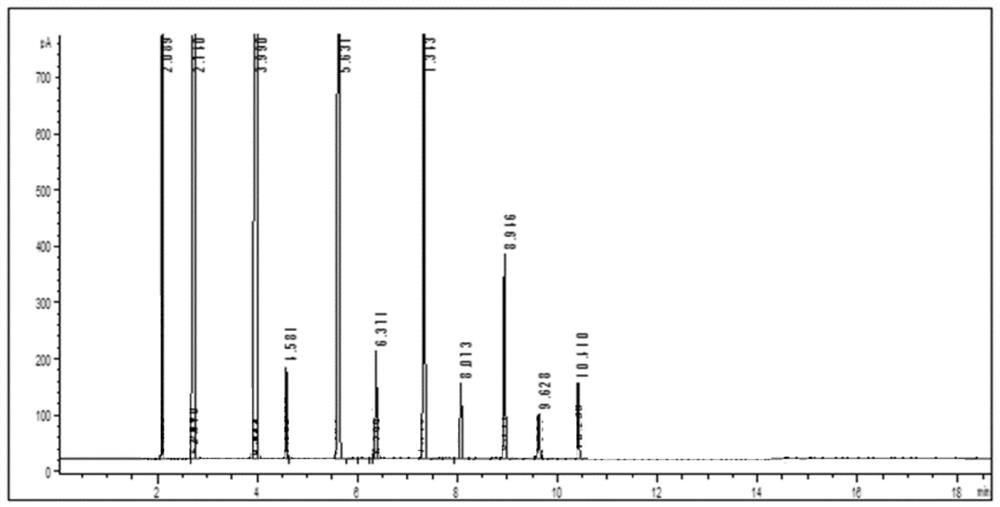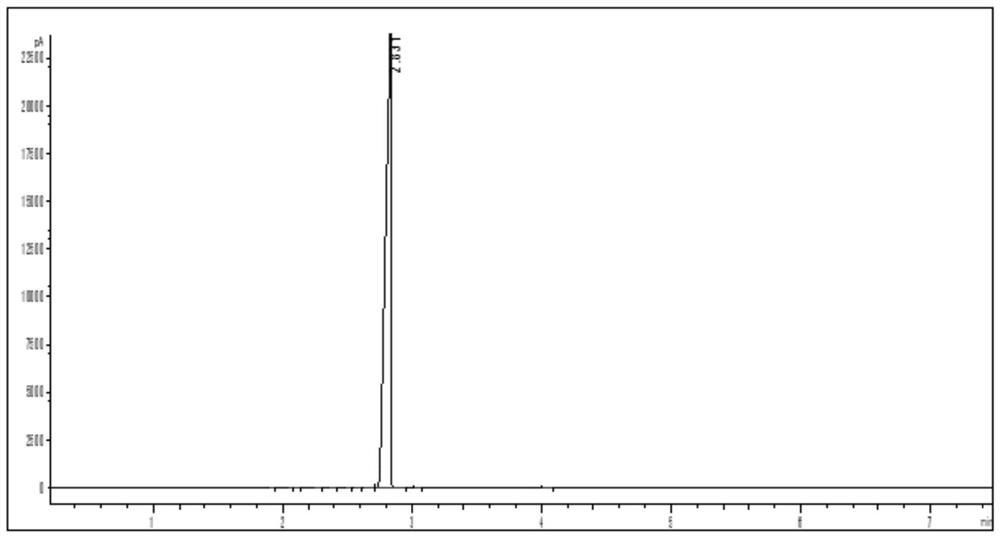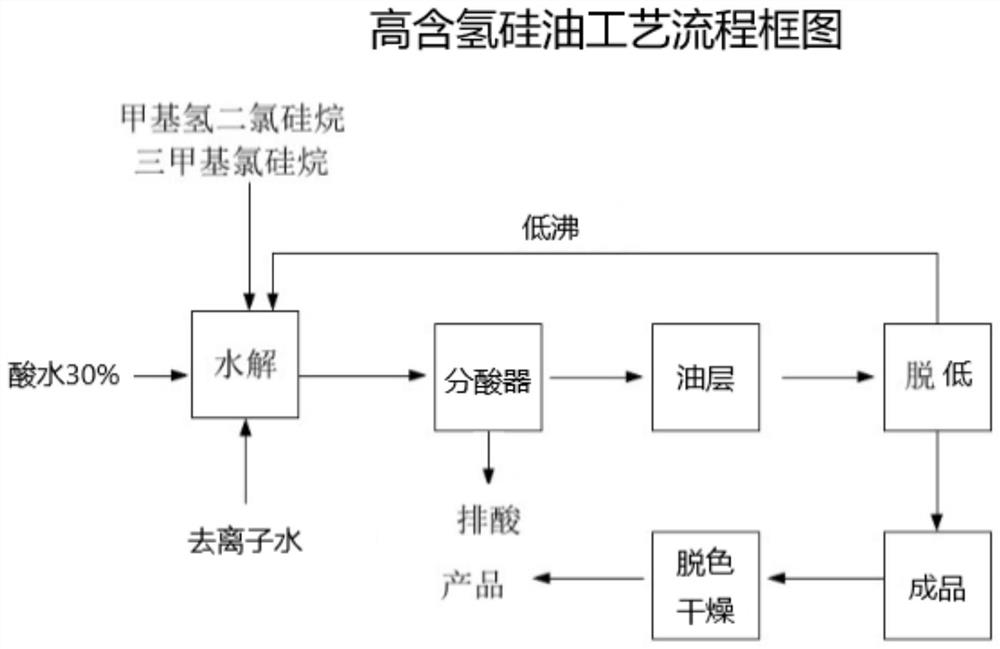A method for synthesizing 1,1,1,3,5,5,5-heptamethyltrisiloxane by utilizing low-boiling substance of hydrogen-containing silicone oil
A technology of heptamethyltrisiloxane and hexamethyldisiloxane, which is applied in the field of organosilicon compound synthesis, can solve the problems of high purification cost, complex components of low boilers, and low product yield, and achieve simple process , the effect of risk reduction
- Summary
- Abstract
- Description
- Claims
- Application Information
AI Technical Summary
Problems solved by technology
Method used
Image
Examples
Embodiment 1
[0045] The hexamethyldisiloxane, hydrogen-containing silicone oil low-boiling matter, and acid clay catalyst are charged in a mass ratio of 10:1:0.05, and the total amount of charging is 300 g, and added to a reactor with mechanical stirring, a thermometer and a reflux condenser. , heat up with stirring, control the temperature to react at 65°C for 8h, then cool down and filter to obtain a synthesis solution containing 1,1,1,3,5,5,5-heptamethyltrisiloxane. After analysis of 1,1, The content of 1,3,5,5,5-heptamethyltrisiloxane was 21.5%. The synthetic solution is subjected to atmospheric distillation, the top temperature is controlled to be 99-101°C to steam out MM, then the temperature is lowered to below 50°C, the vacuum pump is started (pressure is -0.095MPa), and the transition is steamed between 65-70°C Distillate, 58.05g of 1,1,1,3,5,5,5-heptamethyltrisiloxane products with a content of more than 99% were distilled at 76-79°C (accounting for 1,1,1, 90% of the total amoun...
Embodiment 2
[0049] The hexamethyldisiloxane, the hydrogen-containing silicone oil low boiler, and the acid clay catalyst are charged in a mass ratio of 8:1:0.05, and the total amount of the charging is 300 g, and added to a reactor with a mechanical stirring, a thermometer and a reflux condenser. , heat up with stirring, control the temperature to react at 65°C for 8h, then cool down and filter to obtain a synthetic solution containing 1,1,1,3,5,5,5-heptamethyltrisiloxane. After analysis of 1,1, The content of 1,3,5,5,5-heptamethyltrisiloxane was 23.2%.
[0050] The synthetic liquid was subjected to atmospheric distillation and vacuum distillation according to the method of Example 1 to obtain a 1,1,1,3,5,5,5-heptamethyltrisiloxane product with a content of more than 99%. The amount of 1,1,1,3,5,5,5-heptamethyltrisiloxane in the obtained transition fraction accounts for 1,1,1,3,5,5,5-heptamethyltrisiloxane in the synthesis solution About 10% of the total amount of trisiloxanes. The high...
Embodiment 3
[0052] The hexamethyldisiloxane, the hydrogen-containing silicone oil low boiler, and the acid clay catalyst are charged in a mass ratio of 6:1:0.05, and the total amount of the charging is 300 g, and added to a reactor with a mechanical stirring, a thermometer and a reflux condenser. , heat up with stirring, control the temperature to react at 65°C for 8h, then cool down and filter to obtain a synthesis solution containing 1,1,1,3,5,5,5-heptamethyltrisiloxane. After analysis of 1,1, The content of 1,3,5,5,5-heptamethyltrisiloxane was 26%.
[0053] The synthetic liquid was subjected to atmospheric distillation and vacuum distillation according to the method of Example 1 to obtain a 1,1,1,3,5,5,5-heptamethyltrisiloxane product with a content of more than 99%. The amount of 1,1,1,3,5,5,5-heptamethyltrisiloxane in the obtained transition fraction accounts for 1,1,1,3,5,5,5-heptamethyltrisiloxane in the synthesis solution About 10% of the total amount of trisiloxanes. The high-b...
PUM
 Login to View More
Login to View More Abstract
Description
Claims
Application Information
 Login to View More
Login to View More - R&D
- Intellectual Property
- Life Sciences
- Materials
- Tech Scout
- Unparalleled Data Quality
- Higher Quality Content
- 60% Fewer Hallucinations
Browse by: Latest US Patents, China's latest patents, Technical Efficacy Thesaurus, Application Domain, Technology Topic, Popular Technical Reports.
© 2025 PatSnap. All rights reserved.Legal|Privacy policy|Modern Slavery Act Transparency Statement|Sitemap|About US| Contact US: help@patsnap.com



